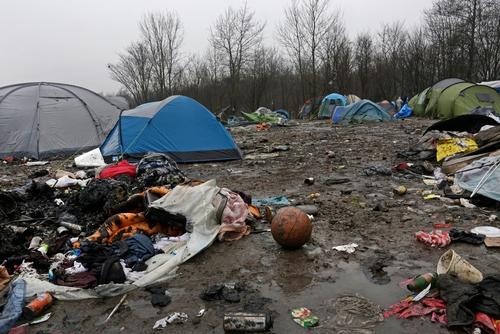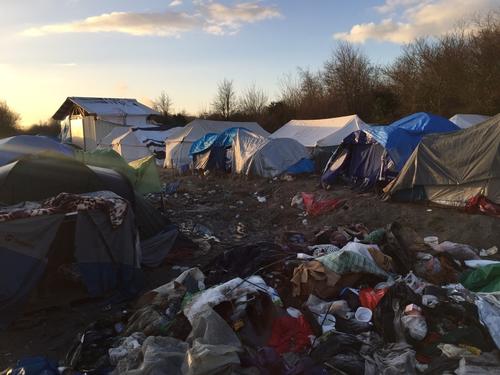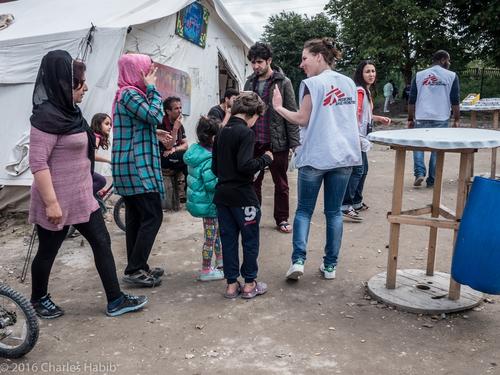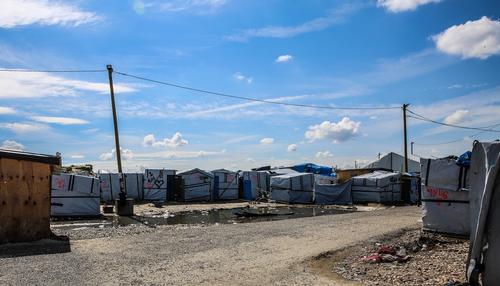Around 2,500 people live in very bad conditions in Grande Synthe, including 200 children, some just a few months old and pregnant women. According to the mayor, the camp’s population has stabilised at around 2,400-2,500 people since mid-December.
People live in small, single skin tents that do not give enough protection from the winter weather – temperatures have reached as low as -6 degrees already. People burn wood to try to keep warm and we have treated some burns caused by standing too close to the fires.
The camp also has rubbish everywhere and is infested with rats.
Health conditions
The sanitation situation is wholly inadequate. There are only 32 toilets, 20 of which were set up by MSF. We expect more toilets to be added soon but the number will still fail to reach minimum standards. There are also only 48 showers.
The camp is on land which is prone to flooding. When it rains, it floods, gets incredibly muddy and turns into an open sewer. The tents also flood, ruining the small amount of personal belongings that people have with them and making it almost impossible for people to stay warm and dry.
There is no adequate shelter at the site. In recent weeks the police have banned any materials that would improve the shelters being brought into the camp. There was a one day reprieve on 11 January when the authorities allowed people to bring in some materials to improve conditions – the same day that the go-ahead was given for the new camp.
Frequently Asked Questions:
What is the history of Grande Synthe camp?
Mayor Damien Lent said: "Since 2006, the City of Grande Synthe has been hosting refugees at the Basroch camp. They come here because there is a gas station along the highway where trucks stop that people can climb on in order to reach England. The influx of refugees this summer is due to the port of Calais being sealed off. In late July, there were sixty people in Grande Synthe, then 180 in mid-August. And 2,400-2,500 today. "
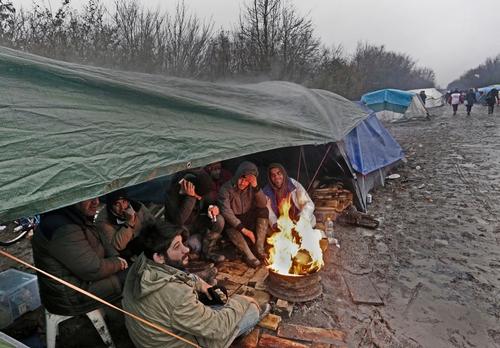
Where are refugees from in Grande Synthe?
Some come from Calais, where it is now impossible to cross through to England because of increased security at the port of Calais and the Eurotunnel site which includes strict security measures such as devices that detect heartbeats. Others arrived after being expelled from Teteghem camp in Dunkirk which was dismantled. People also come from further afield, for example Germany but each person comes because they want to reach Britain.
What are the nationalities?
The Grande-Synthe camp is mostly populated by Iraqi and Iranian Kurds, with some Syrian Kurds. There are also Iranians, Kuwaitis, Iraqi Arabs and Vietnamese. Unlike Calais, where there are Eritrean and Sudanese communities, there are no people of African origin in Grande Synthe. The majority of people in Grande Synthe are either from active conflict zones, were discriminated against in their own country, or were targets of political violence.
Why was a decision taken to move the camp?
It is impossible to make improvements at the current site, because it is too small, overcrowded and prone to flooding. The mayor also wants to use the land to build a new eco-development. The 2,500 people who are at the camp are in danger, in poor conditions and exposed to subzero temperatures.
Why is MSF working in Grande-Synthe?
Faced with the influx of migrants and refugees in his borough, the mayor asked the French government for help to improve the appalling conditions. When the government refused, he asked MSF to step in. MSF is now forced to compensate for the deficiencies of the state.
Because improvements are not possible at the site, the first priority was to find a new, more appropriate place to set up the temporary camp. Land that can accommodate 2,400 people was identified by the mayor and is now being rented by MSF.
The mayor said that he felt he had to act because he feared waking up to the news that a child had frozen to death.
How will MSF develop the new site?
The objective of the new camp, which will be built by MSF with support from the municipality of Grande Synthe, is to provide people with acceptable conditions that allow them to maintain their health and dignity.
500 tents, 23m2, each big enough for five people, will be installed, as well as toilets and showers in sufficient numbers to meet minimum humanitarian standards. The tents will be appropriate for winter and heatable.
Community spaces will also be provided, which can be used for cooking or for children to play in.
When will the camp open?
Work started on the site as soon as MSF got permission. It will take 4-5 weeks to complete. Major work is needed, including levelling the ground, building an access road, installation of water and sewerage pipes as well as electricity cables. The tents will not have electricity.
We will also need to prepare and install the toilets and showers - there will be 126 toilets and 66 showers.
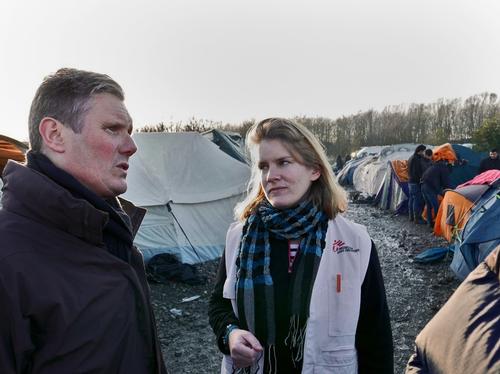
Will even the most vulnerable have to wait for a month?
The sub-prefecture has promised to provide 300 places in temporary accommodation for vulnerable people. On 20 January, 60 people were housed (in a hostel, hotel ...) and another organisation, Emmaus, has sheltered 30 people.
Will people be forced to live in the new camp?
For MSF, it is imperative that people come to the camp on a voluntary basis, without the presence of police. Representatives of the people living in the existing camp will be invited to the new site to see the conditions and so that MSF cultural mediators can explain how the transfer will happen. We will then organise bus shuttles.
The mayor was keen for the move to happen in one day, and for people who do not want to be moved to be moved by force. MSF is opposed to the use of force. We have now agreed that the move can take several days leading up to a fixed end date for the transfer to be completed. People will be able to come and go as they please by day and night, it will not be a closed camp.
Are there any rules that the local authorities have asked MSF to comply with?
We have to comply with the standard fire regulations as set by the local authorities. The site is also between a motorway and a railway, and the city council is going to build safety barriers on either side of the camp. The state would not give the local authority permission to go ahead with the camp unless these measures were put in place.
How many people can be accommodated on the new site?
The new site is designed to accommodate 2,500 people in 500 tents, which each have a capacity for five people. The mayor has already said he will not accept additional tents. MSF will continue to provide assistance to refugees, regardless of their number.

What is the cost of the new site?
MSF estimates that the labour and materials needed to build the camp will cost two million euros. The city council expects to pay around 400,000 euros for construction of the two security barriers. The French government is not paying anything but the mayor will ask the State to reimburse any money that they spend.
MSF is working independently of the state and is not a subcontractor – we make our own decisions about where we work and use our own resources to do so.
The temporary reception camp in Calais, set up by the government, has cost more than 15 million euros. It has a capacity of 1500 dormitory style beds in containers. There are no showers.
Who will run the site?
MSF will not manage the site and we are not aiming to run the camp, this will be handed over to another organisation, which will sign an agreement with the local authority.
MSF will continue to provide medical services at the site, including medical consultations, physiotherapy, and psychological care. Volunteers and associations currently working at Grande Synthe will also be involved at the site.
Will this new camp encourage people to come to northern France?
MSF is responding to an emergency and pulling people out of appalling conditions, as we would in any other country. We are creating a camp for the same number of people
Offering people conditions that meet basic humanitarian standards has no effect on their decision to leave their homes, it just reduces their suffering. The appalling conditions in Grande Synthe are already having significant negative impact on people’s health and not responding is not an option for MSF.
What will MSF do if people refuse to go to the new site?
MSF will work with the refugees to provide information about the new camp and the improved living conditions. People will be free to make their own decisions and MSF will assist them wherever they go.



